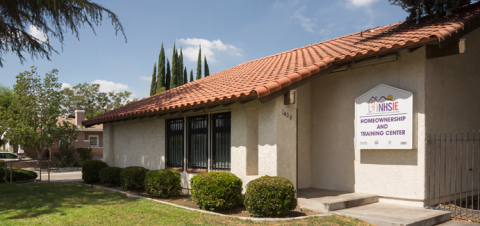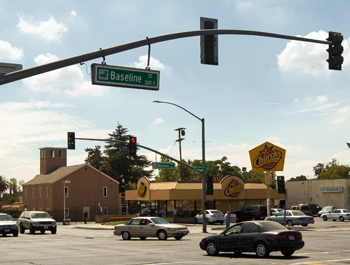Image

Dawn Lee, Executive Director/CEO, Neighborhood Housing Services of the Inland Empire
Challenge: Community revitalization is most effective when partners from all levels work together. Yet, due to years of minimal funding and competition among agencies, there were few examples of that in the city of San Bernardino, CA, which filed for bankruptcy in 2012.
In California, people often work in one county and live in another, and these "blended boundary lines" can lead to challenging situations for funding and resources. San Bernardino County is the largest county in the nation spanning over 20,000 square miles and is the 12th most populous with over two million residents. It is the most inland county in Southern California, sharing its borders with Los Angeles, Orange, Riverside, Kern and Inyo Counties. Of these counties, San Bernardino is the most affordable. It also has the highest need.
In 2011, San Bernardino's per capita contributions, grants and gifts were $4.48 as compared to $195.31 in Los Angeles County and $96.17 in Orange County. The lack of investment forced local agencies to compete for limited funds. There was little support or encouragement for them to collaborate or leverage their resources and capacities.
At the heart of the county, the City of San Bernardino with a population of 215,000 has its share of challenges: 31 percent of its residents live in poverty, it lacks affordable housing stock and has one of the highest crime rates in the state. The 2012 dissolution of the city's Redevelopment Agency, a large source of funding for urban renewal projects, coupled with the city's bankruptcy filing, forced it to make deep cuts in services further straining the community and leaving little money available for revitalization.
Since its inception 35 years ago, Neighborhood Housing Services of the Inland Empire (NHSIE) has been located in one particular neighborhood of San Bernardino. Initially, the agency focused on assisting low-income families attain homeownership within the city, but over time it expanded its services to the broader Inland Empire region which includes both Riverside and San Bernardino counties. As the housing boom and the foreclosure crisis gained momentum, NHSIE's work centered on helping families purchase, repair and prevent foreclosure of their homes. Little attention was directed to what was happening in the surrounding three-mile area where there is less wealth, equity and opportunity than in the rest of the city. Given the city's bankruptcy and the decline in its capacity to help its residents, NHSIE decided it was time to invest in their own backyard.
 At the time, NHSIE had just been awarded NeighborWorks America's Stable Communities Catalytic Grant, a place-based initiative intended to transform communities struggling with the effects of foreclosure and disinvestment. Knowing that community revitalization does not happen in a vacuum, NHSIE looked for other organizations with investment and place-making strategies underway in the same neighborhood.
At the time, NHSIE had just been awarded NeighborWorks America's Stable Communities Catalytic Grant, a place-based initiative intended to transform communities struggling with the effects of foreclosure and disinvestment. Knowing that community revitalization does not happen in a vacuum, NHSIE looked for other organizations with investment and place-making strategies underway in the same neighborhood.NHSIE partnered with the Institute for Public Strategies (IPS). IPS had recently received a Byrne Criminal Justice Innovation Grant to address crime in a subsection of the area covered by NHSIE's grant. NHSIE and IPS worked together with city police and code enforcement to identify and address commercial and residential hot spots by demolishing structures, clearing lots, installing murals, rehabilitating abandoned homes and employing Crime Prevention through Environmental Design practices to improve neighborhood safety. NHSIE and IPS also joined forces with National Community Renaissance (National CORE), a nonprofit affordable housing builder redeveloping the public housing in the neighborhood.
In 2015, NHSIE, IPS and National CORE brought together over 50 community and faith-based groups focused on health, education, job development, youth services, housing and safety. From this meeting, 20 organizations joined together to create the Neighborhood Transformation Collaborative (NTC). NHSIE and their partners took on the leadership role while NTC's members committed to provide data to demonstrate the impact of their programs, partner with other members to seek funding, collaborate on service delivery and actively participate in monthly meetings. NHSIE created a website and a video highlighting the NTC's goals, neighborhood baseline data, membership and services offered and progress on achieving planned goals. The website brings the community's needs, achievement and resources to light and holds the membership accountable for bringing about positive change.
Just 12 months since inception, NTC members have played a key role in the submission of a comprehensive HUD Promise Zone application, organized two collaborative events, implemented a Community Leadership Institute incubated CPTED project to improve residential street lighting and commissioned a commercial corridor market analysis and action plan. They also convened city and county staff and elected officials to discuss collaborative strategies and investment in this "transformative place." Local city officials recognize the NTC as an asset to the community and have begun to offer their support and resources. All have come to understand that broad-based collaboration between the public and private sectors is required to overcome the huge challenges that poverty, low educational attainment, unemployment, and crime place on a neighborhood.
This project illustrates three important lessons:
- An organization, by stepping forward and partnering with others, can help foster a spirit of collaboration.
- Focusing on the needs of a particular place can help to bring organizations together to coordinate their efforts.
- Aligning resources, building capacity and telling the story strengthens the individual and collective impact in a community.

